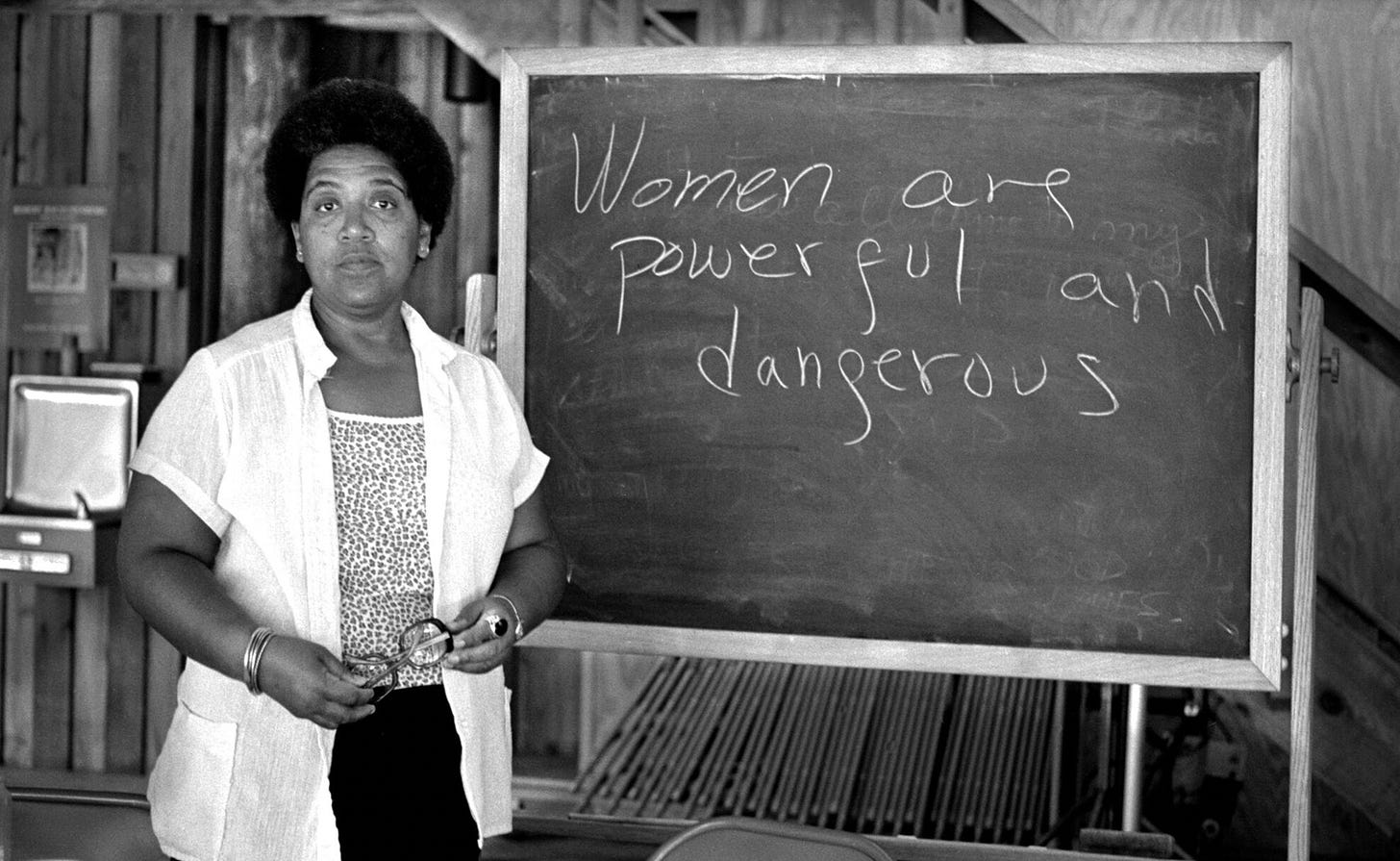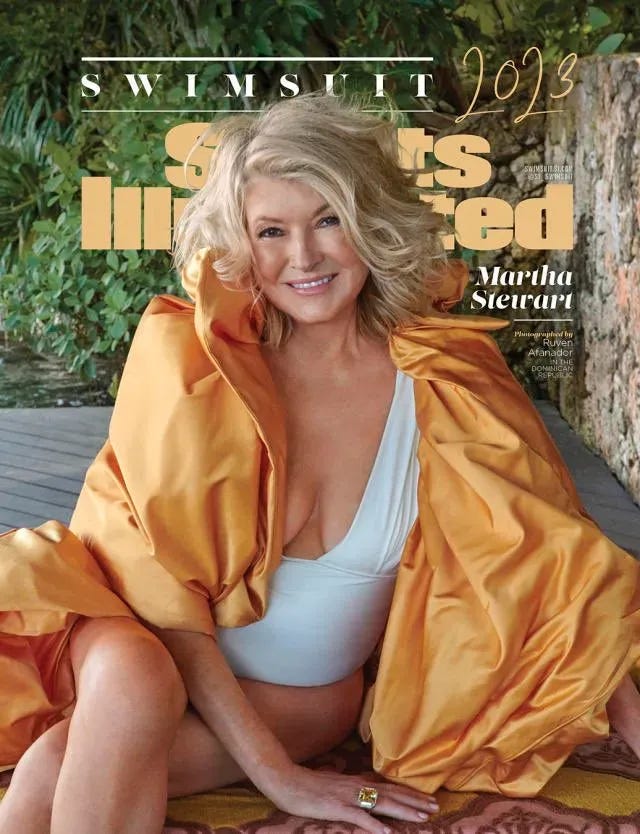Welcome to the Happy Hour Hack, a weekly Friday post of tips and inspiration to take you into the weekend. I always share one thing from my interviewee of the week, along with any ideas I receive from readers, plus some things that are piquing my own interest.
Hack
This post concludes our special two-week feature of Patti Smith. As we were wrapping up our chat, I said something about being scared of the teenage years, and Patti responded with a lovely image, which could apply to all stages of life, that I hope will help me keep things in perspective in the future:
Oh, it’s challenging. It’s challenge upon challenge, but it’s just like everything else. Nothing is linear. It’s all waves. It comes in and goes out. It’s all navigation: high seas and stormy seas and dormant and peaceful seas.
Video
Please allow me the indulgence of sharing Patti singing my namesake* song, “Kimberly,” at the Fillmore in San Francisco in 2015. I WAS AT THIS SHOW.
*Not true at all. But a girl can dream.
Poem
I recently revisited Audre Lorde’s classic poem, “A Litany for Survival.” I’m not sure that I’ve read it since I’ve become a parent. But this part now stands out to me like lightning: “seeking a now that can breed / futures / like bread in our children’s mouths / so their dreams will not reflect / the death of ours.”
After Lorde’s death, Blanche Cook, a lifelong friend, explained that Lorde didn’t necessarily mean “survival” in a literal sense. Cook said: “Implicit in survival is joy, mobility, and effectiveness. And effectiveness is always relative. I mean, none of us are going to move the earth one millimeter from its axis. But if we do what we need to be doing, then we will leave something that continues beyond ourselves. And that is survival.”
Enjoy:
A Litany for Survival
BY AUDRE LORDE
For those of us who live at the shoreline
standing upon the constant edges of decision
crucial and alone
for those of us who cannot indulge
the passing dreams of choice
who love in doorways coming and going
in the hours between dawns
looking inward and outward
at once before and after
seeking a now that can breed
futures
like bread in our children’s mouths
so their dreams will not reflect
the death of ours;
For those of us
who were imprinted with fear
like a faint line in the center of our foreheads
learning to be afraid with our mother’s milk
for by this weapon
this illusion of some safety to be found
the heavy-footed hoped to silence us
For all of us
this instant and this triumph
We were never meant to survive.
And when the sun rises we are afraid
it might not remain
when the sun sets we are afraid
it might not rise in the morning
when our stomachs are full we are afraid
of indigestion
when our stomachs are empty we are afraid
we may never eat again
when we are loved we are afraid
love will vanish
when we are alone we are afraid
love will never return
and when we speak we are afraid
our words will not be heard
nor welcomed
but when we are silent
we are still afraid
So it is better to speak
remembering
we were never meant to survive.
Copyright © 1978 by Audre Lorde.
Perspective
I’m sorry to make you look at this image YET AGAIN, but perhaps you are also having trouble processing your feelings around it? The world kept telling me how amazing it was that Sports Illustrated was putting an 81-year-old on its cover. At the same time, the world kept telling me, Oh my god, she looks so good for her age! And I wasn’t sure what I was feeling, but none of it felt positive, and it would come out by me waving my phone in my husband’s face, yelling, “Am I supposed to look like this in 40 years?! I don’t look like this now!”
But thankfully much smarter and more articulate women than I have weighed in on this. My hands-down favorite is from the brilliant Jessica DeFino. Read it here. If you don’t have time for that, then just enjoy her suggestion for an alternate headline:
I’d be very into this cover if the headline read something like, “Octogenarian Illustrates How Submission To Beauty Standards Is Always Sexually Appealing To Those Who Have Been Conditioned To Find Women Who Comply With The Patriarchy’s Aesthetic Demands Attractive (Even If They Don’t Realize That’s Influencing Who They Find Attractive & Why)!”
Kintsugi

Pondering Martha Stewart and her face somehow led me to think about Kintsugi, the Japanese art of putting broken pottery pieces back together with gold. It’s based on the concept of wabi sabi, which finds beauty in nature’s imperfection.
The above video does an incredible job of describing Kintsugi, and I highly recommend watching it. If you don’t want to take the time, then just read these quotes:
Kintsugi symbolizes the truth that repair requires transformation, that the pristine is less beautiful than the broken—and that the shape of us is impossible to see until it’s fractured, until a wound, like a crack, runs its length.
The fractures on a ceramic bowl don’t represent the end of that object’s life but an essential moment in its history.
And I am not one to read YouTube comments, but I happened to glance at the first one, and it brought tears to my eyes:
My autistic seven-year-old told me he wants to be good in school, but he doesn't know how. Then he asked me why his brain is broken, while crying his eyes out. Kintsugi helped me explain to him why he isn’t bad and why I would not change him if I could. It helped.
So, nice try, Martha. But I’m going to try to embrace (probably with a dose of hypocrisy along the way) my increasing changes and “flaws” and cracks with as much grace as I can muster. And I think the ones who love me wouldn’t want it any other way.






